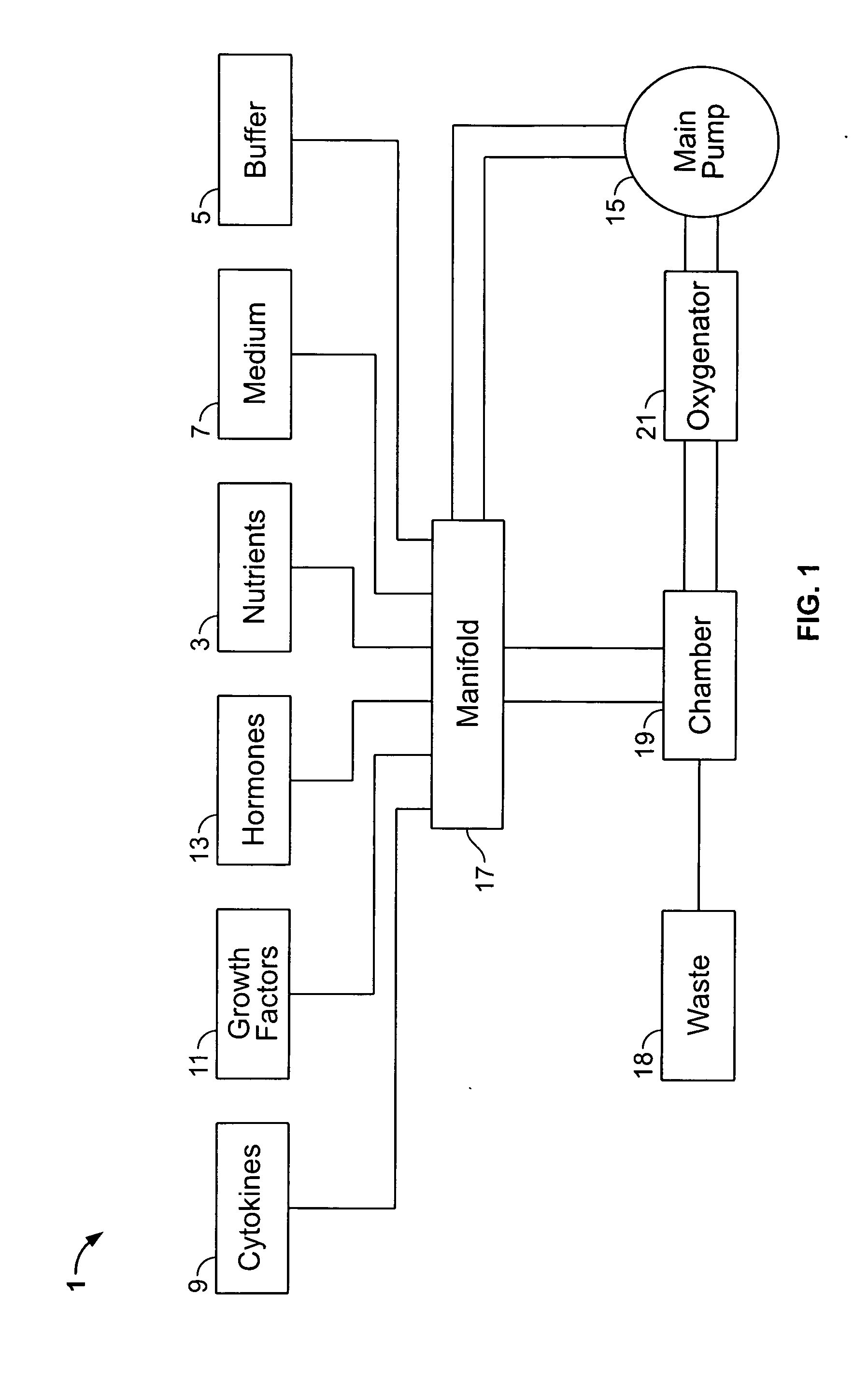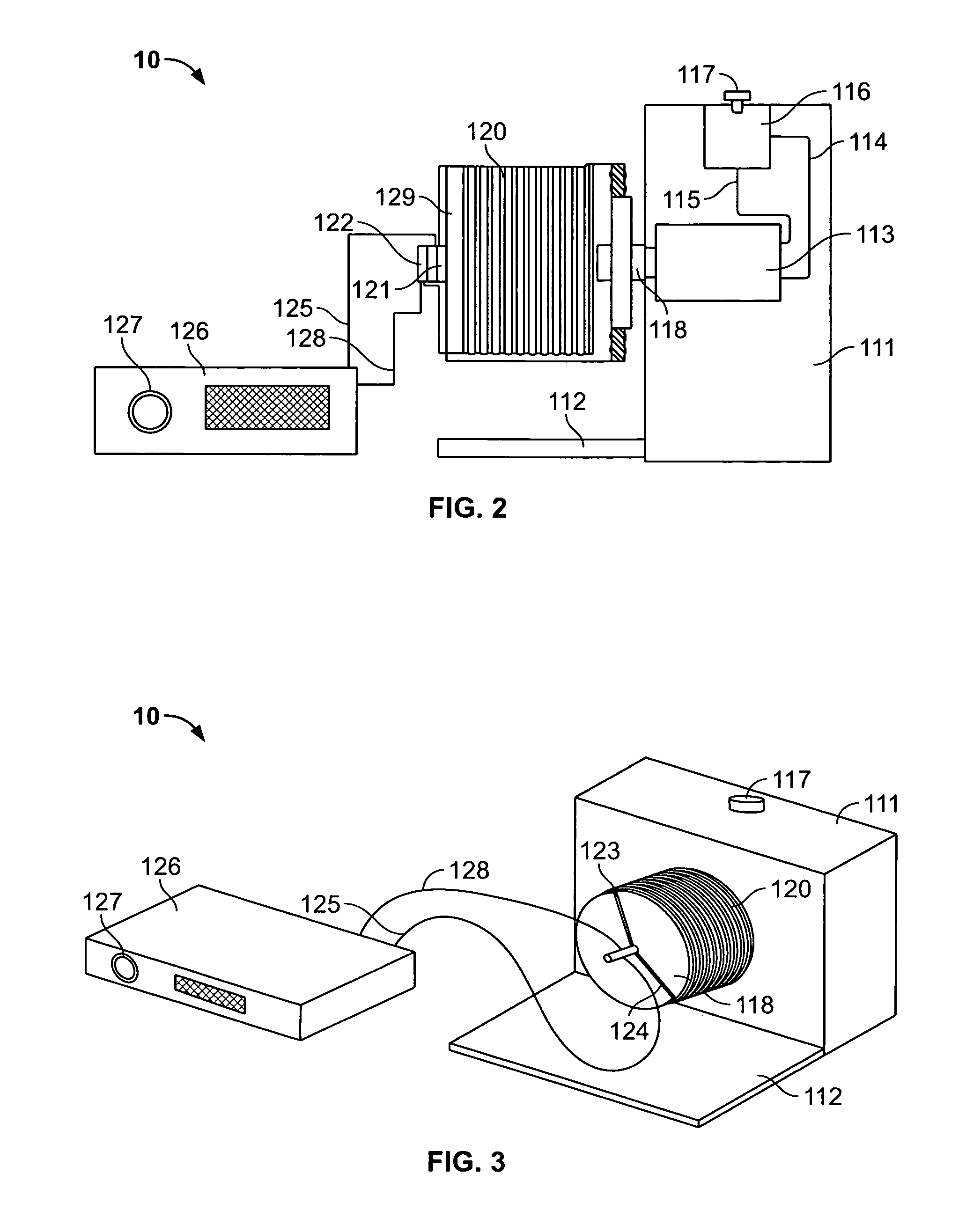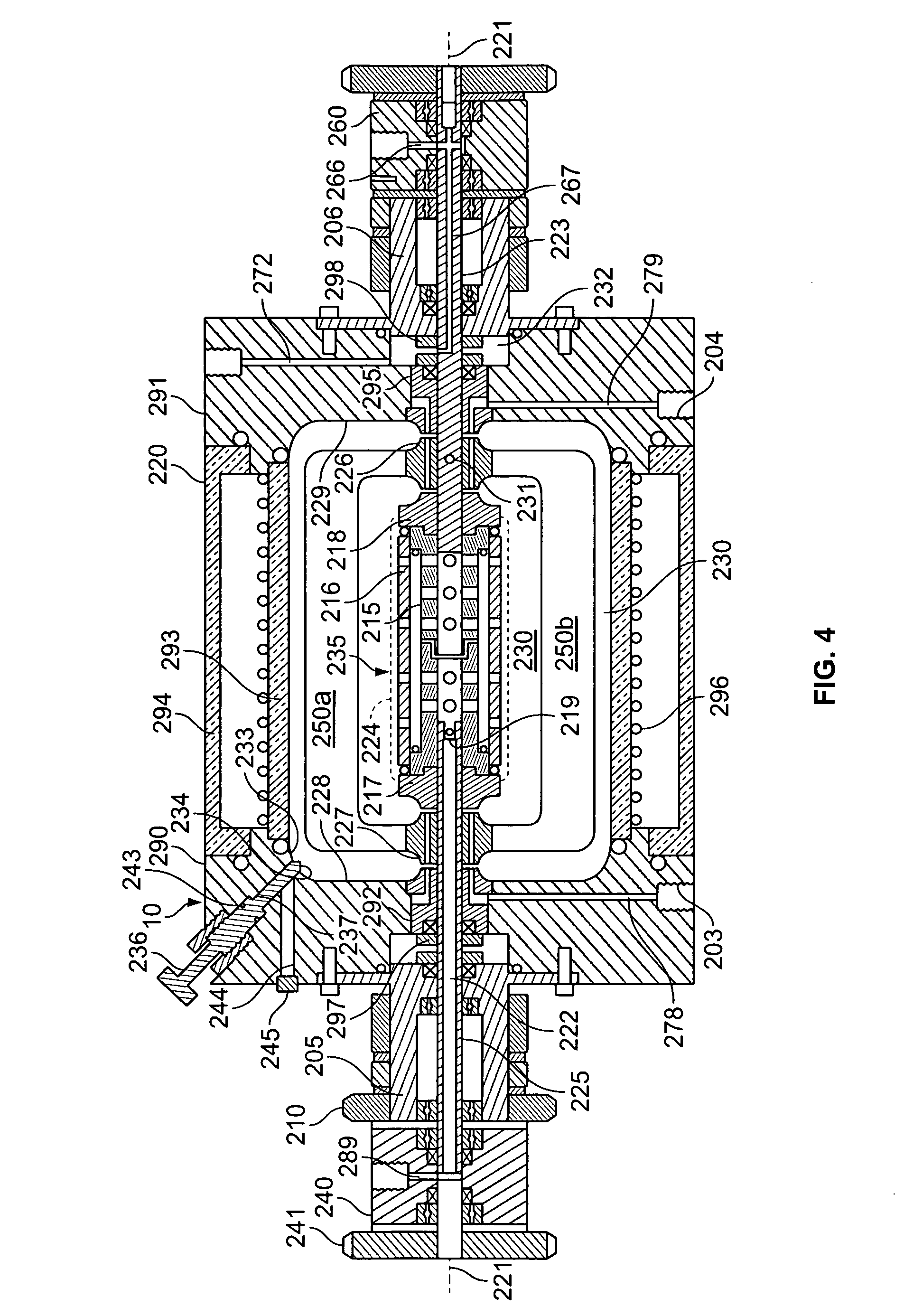Method and composition for repairing epithelial and other cells and tissue
a technology of epithelial cells and tissue, applied in the field of tissue repair, can solve the problems of tissue rejection, major problems, transplantation of human tissue, etc., and achieve the effect of effectively repairing damaged tissu
- Summary
- Abstract
- Description
- Claims
- Application Information
AI Technical Summary
Benefits of technology
Problems solved by technology
Method used
Image
Examples
example i
Actual TVEMF-Expansion of Cells in a TVEMF Bioreactor
[0123] Peripheral blood was collected and peripheral blood cells expanded as shown in Table 1, and described below.
A) Collection and Maintenance of Cells
[0124] Human peripheral blood (75 ml; about 0.75×106 cells / ml) was collected from ten human donors by syringe as described above and suspended in a like amount of about 75 ml Iscov's modified Dulbecco's medium (IMDM) (GIBCO, Grand Island, N.Y.) supplemented with 20% of 5% human albumin (HA), 100 ng / ml recombinant human G-CSF (Amgen Inc., Thousand Oaks, Calif.), and 100 ng / ml recombinant human stem cell factor (SCF) (Amgen) to prepare a blood mixture. Ten small blood samples (one for each donor) were set aside as control samples. The peripheral blood mixture was placed in a TVEMF-bioreactor as shown in FIGS. 2 and 3 herein. TVEMF-expansion occurred at 37° C., 6% CO2, with a normal air O2 / N ratio. The TVEMF-bioreactor was rotated at a speed of 10 rotations per minute (rpm) initi...
PUM
 Login to View More
Login to View More Abstract
Description
Claims
Application Information
 Login to View More
Login to View More - R&D
- Intellectual Property
- Life Sciences
- Materials
- Tech Scout
- Unparalleled Data Quality
- Higher Quality Content
- 60% Fewer Hallucinations
Browse by: Latest US Patents, China's latest patents, Technical Efficacy Thesaurus, Application Domain, Technology Topic, Popular Technical Reports.
© 2025 PatSnap. All rights reserved.Legal|Privacy policy|Modern Slavery Act Transparency Statement|Sitemap|About US| Contact US: help@patsnap.com



